Last updated on April 29th, 2025 at 08:44 am

One morning, you wake up with terrible pain in your wrist, and out of no clue, you start shaking the hand in order to get some relief. If you are experiencing the exact same problem, then you could be suffering from a wrist pain condition known as carpal tunnel syndrome.
It is commonly seen in professionals who are required to work long hours on a computer keyboard. Fortunately, if detected early it can easily be managed by simple home tips, exercises, and physiotherapy.
In this article, we will learn the best exercises to cure carpal tunnel at home
How do I know if I have carpal tunnel syndrome?
In my usual physiotherapy practice, I have found that the person whose professions involve long hours of working on the computer keyboard are more susceptible to this kind of wrist pain.
I have also found that physiotherapy and exercises for carpal tunnel syndrome are very beneficial. Carpal tunnel syndrome sufferers usually come to me in my clinic with complaints like:
- Tingling and numbness on the palm.
- Weak grip strength of the hand.
- Difficulty in holding a glass of water with a painful hand.
These are some common signs you could look for. As you will proceed further with this article, you will learn more of its signs and symptoms. Now, let’s try to understand what carpal tunnel syndrome is and why it causes wrist pain.
What is carpal tunnel syndrome?
Carpal tunnel syndrome is a painful wrist joint condition manifested by tingling and numbness in the palm and weakness of the hand. But to better understand the symptoms of carpal tunnel we must first have a clear picture of its causes.
In carpal tunnel syndrome, the median nerve is compressed at the wrist joint when it passes through the carpal tunnel. Compression could occur either due to decreased circumference of the tunnel itself or due to increased pressure inside the tunnel due to fluid retention.
In either of the conditions, all the vital structure passing through gets compressed. The nerve being the most sensitive of all is responsible for all the symptoms.
Now you know there is a tunnel on the wrist joint. But, you might be wondering, what is this carpal tunnel made up of? Where is it actually present at the wrist? How does it cause wrist pain?
To, answer all these questions, we need to learn a little about its related anatomy.
Anatomy of carpal tunnel
Carpal tunnel is present at the wrist joint. It is actually a tunnel-like structure through which different structures like blood vessels, tendons and nerve passes through. As you can see in the image below.
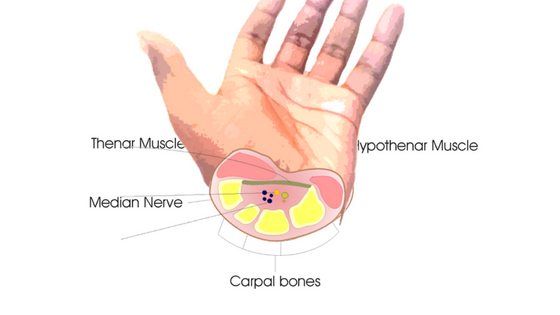
We can compare this to a railway tunnel through which the railway track passes. Every tunnel has a roof and floor. The roof of this tunnel is formed by the soft flap-like structure called flexor retinaculum, and the floor is formed by the carpal bones.
All the vital structures like nerves, tendons, arteries, and veins pass through this tunnel. But the most important and delicate of all is the median nerve.
The median nerve is a nerve that originates from our neck’s cervical region and travels down the hand to supply the thumb, index finger and middle finger.
What causes carpal tunnel pain
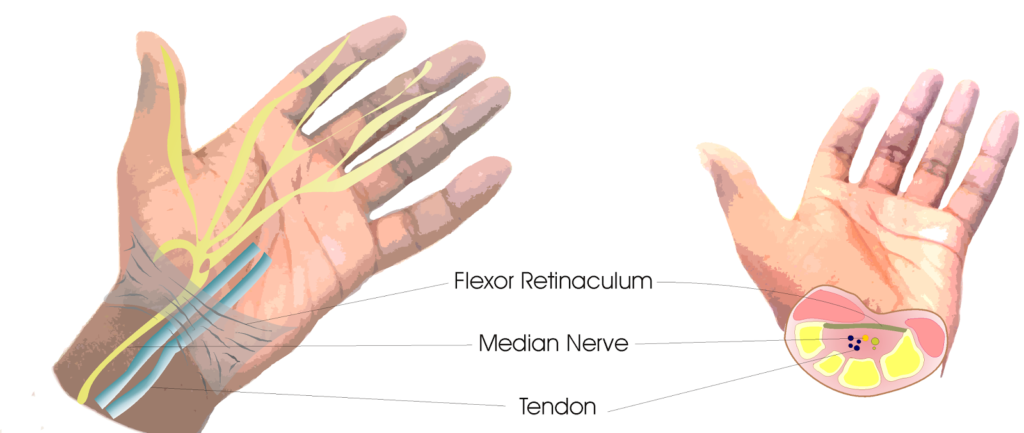
Any pathology around the carpal tunnel (wrist) can lead to the narrowing of the canal. This could be an actual narrowing of the tunnel or when the tunnel is filled with fluid. In both condition it exerts pressure inside the tunnel, leading to compression of the median nerve.
There are many factors that lead to an increase in the pressure inside the tunnel. We have listed a few of them below.
The following factors can contribute to carpal tunnel syndrome:
- Trauma or injury to the wrist that causes swelling. Like scaphoid fracture or Colle’s fracture
- Hypothyroidism.
- Rheumatoid arthritis.
- Work stress is common in the long hours working in the computer keyboard. This is the most common reason why wrist pain complains visit us.
- During pregnancy or Menopause.
- Development of a cyst or
tumor in the canal. - In some cases, no cause can be identified.
Symptoms of carpal tunnel syndrome
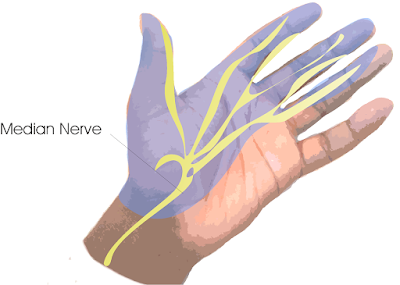
The symptoms are usually found on the outer side of the palm and finger (on the side of thumb) along the nerve path because of compression of the median nerve. You will have numbness on the palmar aspect of the thumb, index finger, and a few portions of the middle finger.
You can see the figure in which the shaded region is the symptoms area. Note that it is along the path of the median nerve. Morning pain and tingling sensation are the most irritating symptoms, you may even wake up out of sleep due to pain.
Your hand may “fall asleep” frequently and have difficulty in holding a pen, a glass of water, bottle and you may even drop the objects.
Other symptoms include:
- Numbness, tingling, and pain in your thumb and the first three fingers of your hand
- Pain and burning that travels up your arm
- Wrist pain at night that interferes with sleep
- Weakness in the muscles of the hand
How to prevent carpal tunnel
One of the most basic things to prevent carpal tunnel is to follow the ergonomic way of sitting at your desk. Adopting an improper way of sitting at a computer may not only lead to wrist pain, but it can also result in neck and back pain. You learn more about computer ergonomics here: “What is the Best Way to Sit at Your Desk?“.
Another way is to take a break every half hour and perform this elbow exercise for 5 minutes.
Easy carpal tunnel exercises
All the carpal tunnel exercises aim to stretch the muscle and soft tissue around the wrist and carpal tunnel. This way we can release the compression inside the tunnel and create sufficient room for the nerve and other structures that pass by.
The exercises essentially involve wrist range of motion, wrist stretching, and strengthening exercises.
1) Wrist flexion-extension exercise
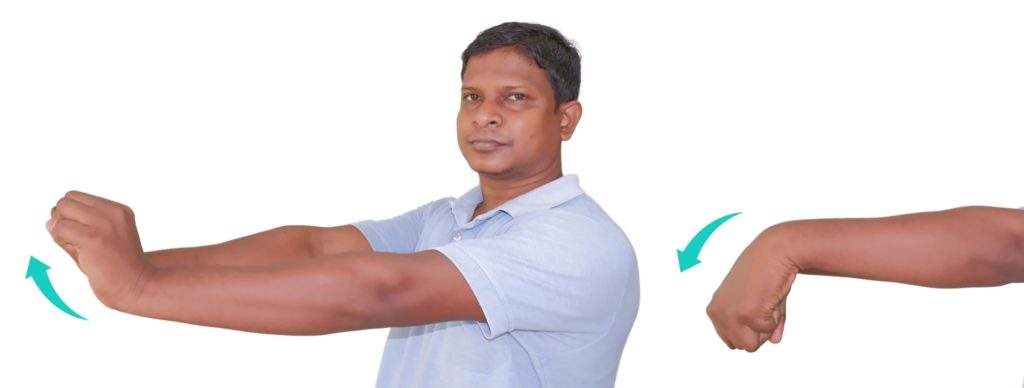
So, the first exercise in the list of carpal tunnel exercises is the wrist range of motion exercises. Moving the wrist differently will ease the pressure inside the carpal tunnel.
- Start by holding your arm out before you with your palm facing down.
- Begin by slowly moving your hand upward at the wrist as if trying to point your fingers toward the ceiling.
- Hold this position for a few seconds, then slowly lower your hand.
- Repeat this motion 20 to 30 times.
2) Wrist ulnar radial deviation
The next wrist range of motion exercise is wrist ulnar and radial deviation. Here are the step-by-step methods to perform this exercise correctly:
- Sit or stand with good posture, keeping your back straight.
- Hold a lightweight, such as a dumbbell, with your palm facing downward.
- Rest your forearm on a table or your thigh to stabilize it.
- Start with your wrist in a neutral position, then slowly bend your wrist to move your hand towards your little finger (ulnar deviation).
- Hold this position for a few seconds, then slowly return to the starting position.
- Next, slowly bend your wrist to move your hand towards your thumb (radial deviation).
- Hold this position for a few seconds, then slowly return to the starting position.
- Repeat the ulnar and radial deviation movements for the prescribed number of repetitions and sets as your healthcare provider or fitness professional recommends.
3) Wrist circumduction exercise
Wrist circumduction is actually a combination of the above two exercises. It is an easy yet effective exercise; here’s the proper way to do it.
- Start by sitting comfortably with your back straight and shoulders relaxed.
- Extend your right arm straight out in front of you at shoulder height, palm facing the floor.
- Begin by moving your wrist in a circular motion, leading with your thumb. Imagine drawing a circle with your thumb, moving from the inside out.
- Continue the circular motion for 10-15 repetitions, then switch to the left arm and repeat the exercise.
- As you perform the exercise, focus on keeping the movement smooth and controlled and avoid any jerky or sudden movements.
- Remember to breathe steadily throughout the exercise and stop if you feel any pain or discomfort.
Also Read: 5 Easy Dupuytren’s Contracture Exercises for Finger Pain Relief
4) Wrist flexor stretching
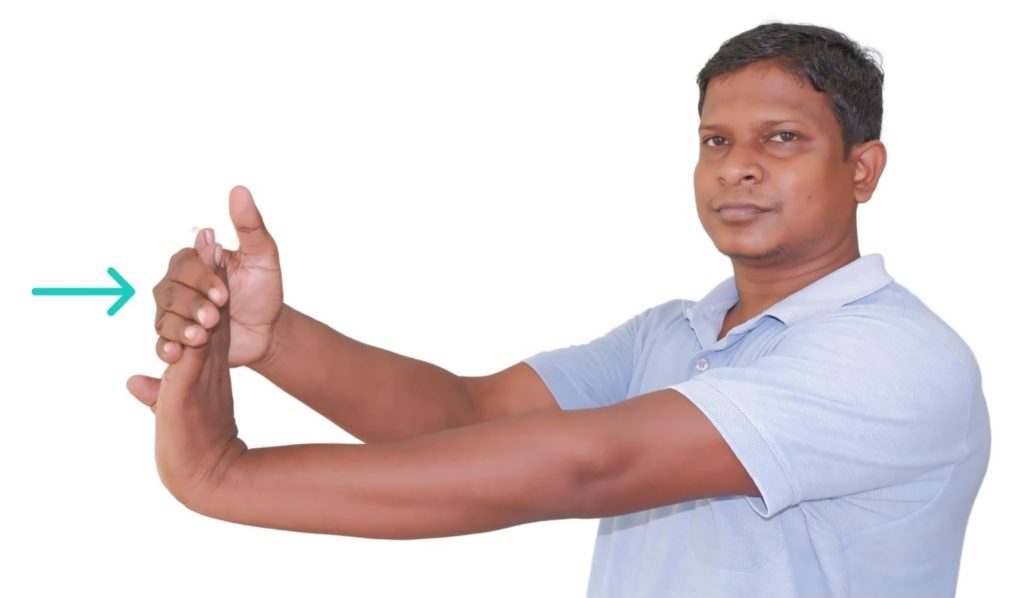
Next coming to the stretching exercise, the first exercise is the wrist flexor stretching. Follow these steps:
- Begin by sitting or standing in a comfortable position.
- Place your unaffected hand over the fingers of the hand experiencing pain, as shown in the figure.
- Apply gentle pressure with your unaffected hand to bend the wrist of the affected hand.
- Apply enough pressure to feel a mild stretch in the wrist, but not to the point of pain.
- Hold this position for one minute while maintaining a steady, gentle pressure.
- Slowly release the pressure and straighten the wrist.
- Repeat this exercise 3 to 5 times in a single session.
- Aim to perform this stretching exercise two to three times daily for optimal benefit.
5) Prayer stretch for carpal tunnel wrist pain

Prayer stretch is an easy and effective way to stretch the stiff, soft tissues of the carpal tunnel. To perform the prayer stretch exercise, follow these steps:
- Begin by standing or sitting in a comfortable position.
- Join your hands together in front of your chest as if in a prayer position.
- Press both hands together firmly so that the wrist joints come together.
- You should feel a gentle stretching sensation in your wrist joints and possibly in your forearms.
- Maintain this position for 30 seconds, focusing on your breathing and keeping your posture relaxed.
- After 30 seconds, release the pressure and relax your hands.
- Repeat the stretch 3 to 4 times in a single session, taking short breaks in between repetitions if needed.
6) Grip strengthening exercises for carpal tunnel syndrome
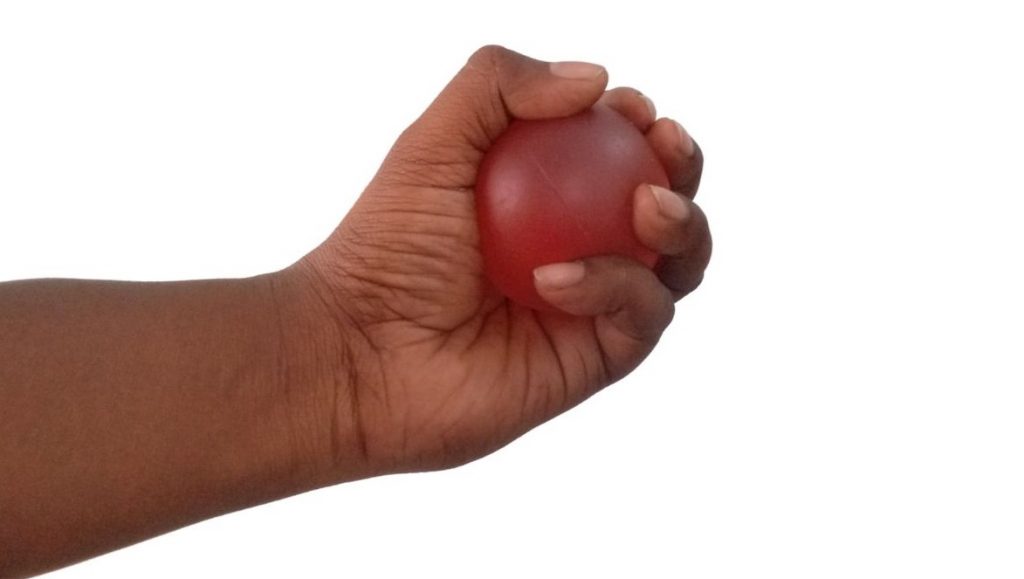
To perform the grip-strengthening exercise, follow these steps:
- Begin by holding a soft sponge ball or gel ball in your hand.
- Squeeze the ball as hard as you can without causing any pain.
- Hold the squeeze for 5 seconds, then release.
- Repeat this squeezing and releasing motion for 10-15 repetitions.
- Perform this exercise with the other hand as well.
7) Tennis ball self-massage
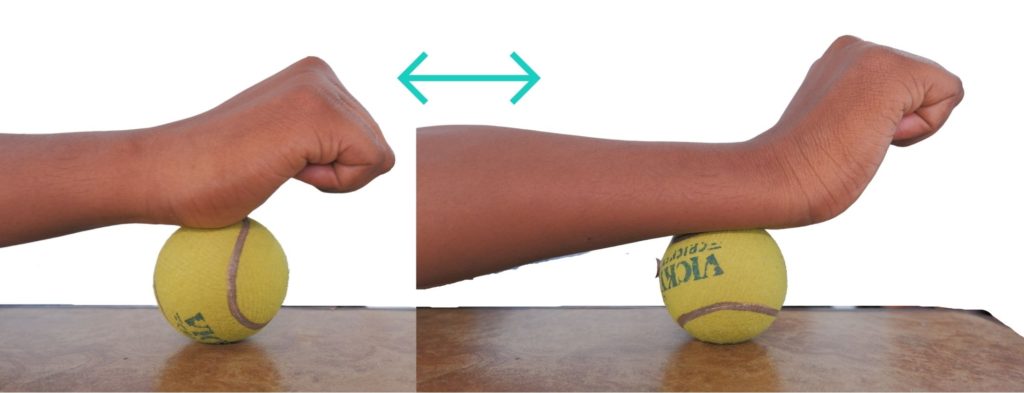
Our final exercise in the list of carpal tunnel exercises is a self-massage technique. This is a very effective technique that I usually recommend to my patients.
To perform the self-massage technique for carpal tunnel relief, you’ll need a tennis ball and a flat surface, such as a table.
- Start by placing the tennis ball on the table and positioning your wrist directly over it.
- With your hand resting on top of the tennis ball, gently roll the ball back and forth underneath your wrist.
- Following the illustration provided, apply a comfortable amount of pressure to the ball as you move your hand to and fro.
- This movement effectively massages the area around your wrist, helping to alleviate pressure within the carpal tunnel.
- To experience its benefits, aim to perform this self-massage for 3 to 5 minutes in a single session.
Physiotherapy for carpal tunnel syndrome
Physiotherapy is beneficial for most carpal tunnel sufferers, especially in mild to moderate cases. When referred to a physiotherapist, they will thoroughly take your history of pain.
They will take a careful assessment to determine which factors have contributed to the development of the condition. Accordingly, the treatment plan is devised.
Phase-I (Acute Phase)
During the acute phase characterised by inflammatory signs (i.e. morning pain or pain with rest), R.I.C.E Regime is beneficial. Where:
- R is for rest- This involves resting from aggravating activities, often using a splint. To start with, the splint has to be used continuously. As the pain subsides, use it during the night. The splint mentioned below can be used for it.
- I for icing. Ice packs, also known as cryotherapy, are beneficial for pain relief. You can either use ice cubes or the most convenient is the use of a cold gel pack you can use.
- C for compression– Compression helps to prevent swelling and inflammation around the wrist joint thereby reducing pain. You can use a wrist support brace for this.
- E for elevation, keeping the arm elevated.
Ultrasonic therapy: The application of UST or ultrasound therapy over the wrist has to be found to give tremendous relief to the sufferer. One needs to go to a qualified physio for ultrasonic therapy.
Phase-II
As the acute pain subsides, your physiotherapist will address:
- Carpal bone mobilization
- Stretching of flexor retinaculum to open the carpal tunnel.
- Gliding exercises of nerve and tendon to ensure full unrestricted nerve motion is available.
- Muscle and soft tissue extensibility.
- Ultra Sonic Therapy.
- Interferential Therapy.
Other tips for carpal tunnel syndrome
One of the most basic things to prevent carpal tunnel is to follow the ergonomic way of working on a computer and keyboard. Adopting an improper way of sitting on a computer may not only lead to wrist pain, but it can also result in neck and back pain.
Activities that place large amounts of stress through the forearm flexors should be minimized, these include: racquet sports, gripping activities, opening jars, cans or doors, carrying or lifting.
Resting from aggravating activities ensures that the body can begin the healing process in the absence of further tissue damage. Once the patient can perform these activities pain-free, a gradual return to these activities is indicated, provided there is no increase in symptoms.
Exercises are very important, however, you may sometimes develop pain after the exercise session. This is quite normal and you need not have to worry about it. Let me share some important tips and products that can help you with this.
If you have pain, simply apply a pain ointment over the painful area and let the body absorb it for 10 minutes. After a gap of ten minutes, apply a cold pack over the area, and you will feel almost instant relief.
JOINT FLEX OINTMENT
This highly effective pain balm I would like to recommend to you. I often prescribe this to my patient at my clinic. Get this for yourself now.
The treatment of carpal tunnel is possible. If detected early and in a less severe form it can easily be managed by simple exercises and some effective yet simple home tips. In the coming article, we will discuss its treatment, exercises, and home tips.
Often the numbness of the finger with a tingling sensation on the arm and forearm could be a result of cervical radiculopathy. For this, you need to do completely different sets of exercises.
If you are diagnosed with carpal tunnel syndrome and these exercises are not helping you, then you must immediately consult your doctor.
Keep Reading: 7 Easy Neck Exercises For Pinched Nerve To Cure Cervical Radiculopathy Permanently
The author is a physiotherapist who has been practising for the last 17 years. He holds a Bachelor's in Physiotherapy (BPT) from SVNIRTAR (Swami Vivekananda National Institute of Rehabilitation and Research), one of the prestigious physiotherapy schools in India.
Whatever he learns dealing with his patient, he shares it with the world through blogs and e-books. He also owns a YouTube channel, "Sunit Physiotherapist" with over 8 lakh active subscribers. Here, he shares everything he gets to learn serving the patient.



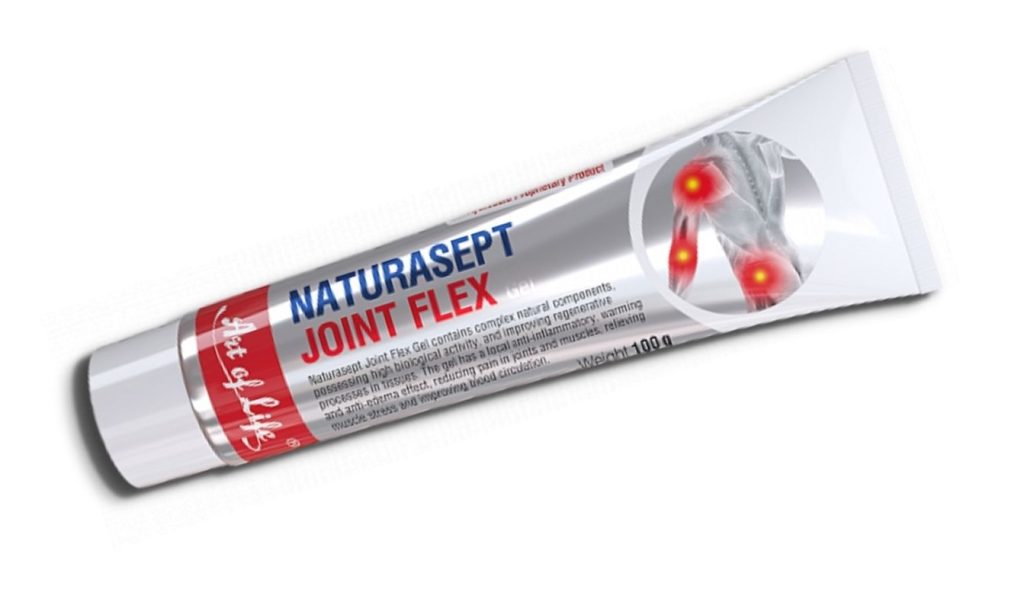


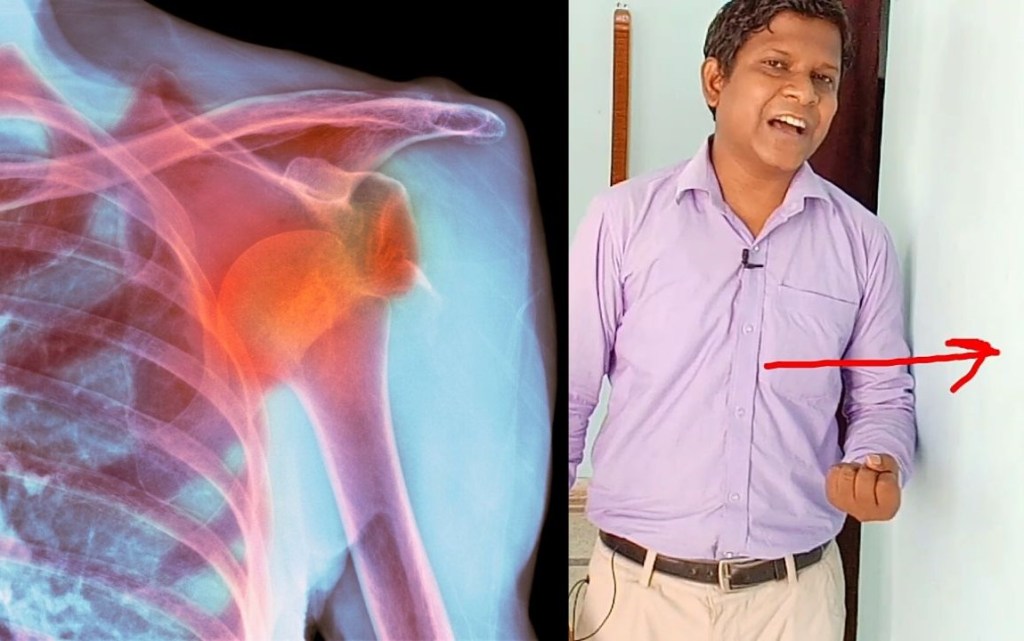



Pingback: You Doing Right Exercise for Wrist Pain? These 8 easy exercises will surely help you - Physiosunit
Pingback: What's Dinner Fork Deformity? Colle's Fracture Physiotherapy Management - Physiosunit